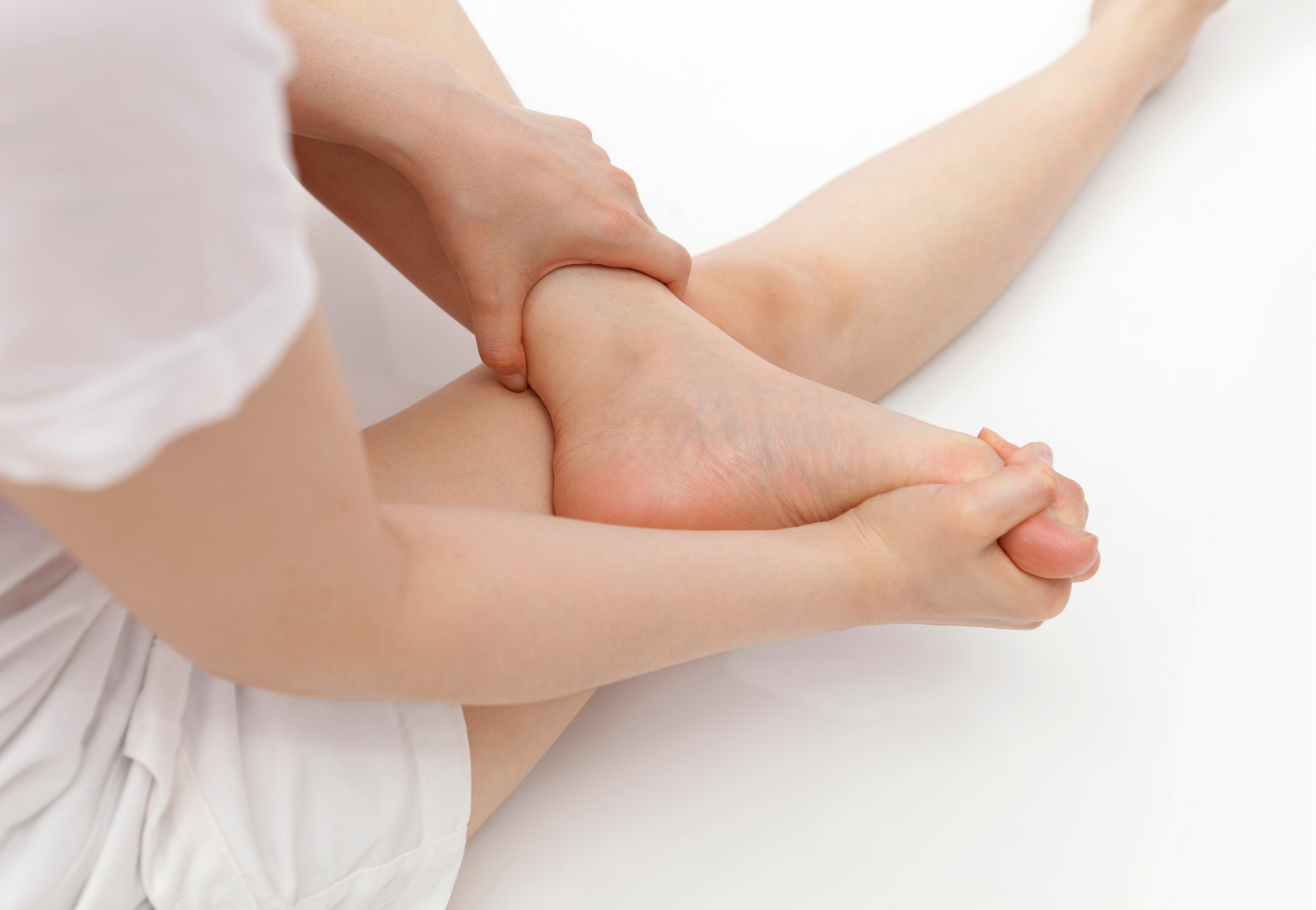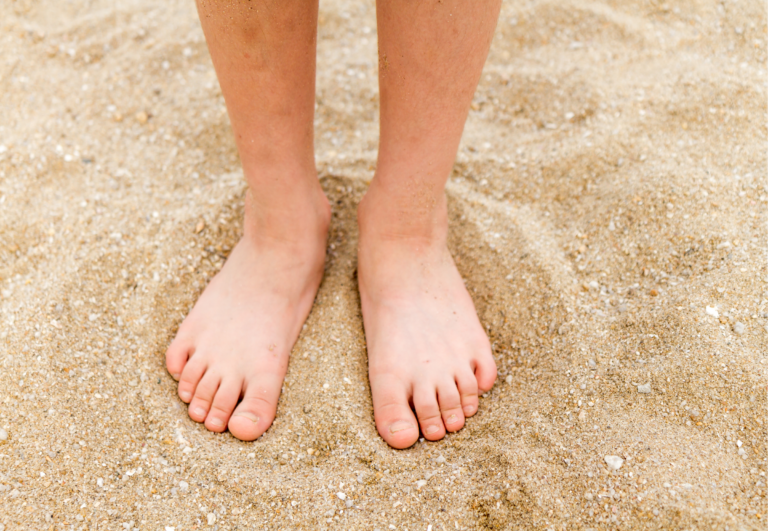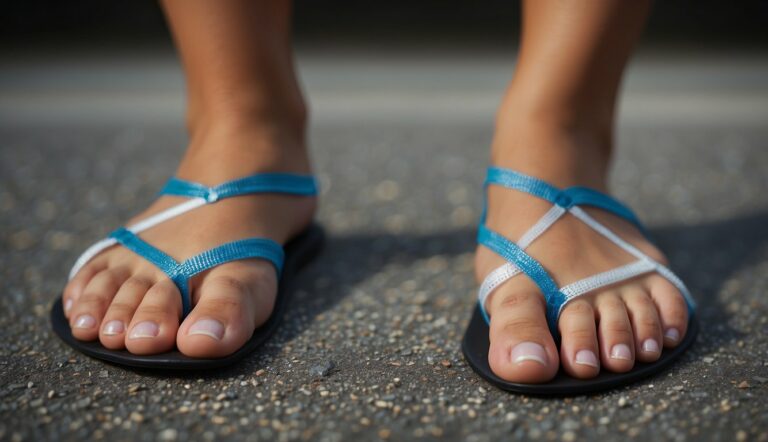How Toe Spacers Can Help With Podiatry Issues: Exploring the Benefits
Toe spacers have gained attention in the realm of foot care as a non-invasive solution to a variety of podiatric issues. From my experience, these simple devices, which are positioned between the toes, work by gently realigning the toes to their natural position. In doing so, they help alleviate foot pain, which is often a consequence of toe crowding—a common issue caused by tight-fitting shoes.
Regular use of toe spacers can significantly enhance foot mobility and overall toe health. They play a crucial role in stretching and conditioning the muscles around the toes, which is especially beneficial for individuals with bunions, hammertoes, or other toe deformities. Moreover, properly aligned toes contribute to a better balance and stability, which can positively impact one’s gait and posture.
As someone deeply familiar with the benefits of toe spacers, I’ve observed their positive impact on foot health. They foster improved circulation and can prevent further complications associated with cramped toes. While toe spacers can be a helpful addition to a foot care routine, it’s important to remember they are not a cure-all and should be used in conjunction with good footwear practices and, when necessary, under a healthcare professional’s guidance.
How Toe Spacers Can Help With Podiatry Issues
Toe spacers can be an effective tool in managing a variety of podiatry issues by addressing the structural and functional aspects of foot health.
Here’s how toe spacers can help with podiatry issues:
- Correct toe misalignment: Toe spacers can help realign the toes to their natural position, which can alleviate and prevent issues such as bunions, hammertoes, and claw toes.
- Reduce pressure and friction: By preventing toes from rubbing together, toe spacers can decrease the risk of corns, calluses, and blisters that result from excessive pressure and friction.
- Improve circulation: Properly spaced toes can enhance blood flow, which is beneficial for overall foot health and can aid in the healing of various foot conditions.
- Support foot rehabilitation: For those recovering from foot surgeries or injuries, toe spacers can aid in the rehabilitation process by maintaining proper toe alignment during the healing period.
- Enhance foot comfort: Regular use of toe spacers can lead to greater overall foot comfort, which is crucial for individuals dealing with chronic foot pain or discomfort.

Anatomy and Causes of Podiatry Issues
My experience with toe spacers has shown me how understanding the underlying anatomy and causes of podiatry issues is crucial for effective intervention. Here, I’ll detail how toe deformities develop, the impact of footwear on foot health, and common foot ailments.
Toe Deformities and Alignment
Toe deformities such as hammertoes and bunions often stem from a combination of genetic predisposition and external pressures. Both conditions involve structural changes in the foot: hammertoes manifest as an abnormal bend in the middle joint of the toe, while bunions, or hallux valgus, appear as a bony bump at the base of the big toe. These afflictions can lead to:
- Misalignment of toe joints
- Overlapping of toes
- Stress on the foot’s architecture
Proper toe alignment is essential for distributing weight evenly during movement, and misalignments can lead to additional complications, including corns, calluses, and ingrown toenails.
Impact of Footwear on Foot Health
The footwear we choose plays a significant role in the health of our feet. Poor choices can exacerbate or contribute to podiatry issues:
- Tight shoes can crowd toes, leading to deformities.
- High heels increase pressure on the front of the foot.
- Inadequate arch support can lead to conditions like flat feet or overpronation, where the foot rolls inward excessively when walking.
Choosing the right footwear is vital to prevent these issues and provide necessary support to the foot’s anatomy.
Common Foot Ailments and Conditions
Several common foot ailments result from or are aggravated by misaligned toes and poor footwear choices. These include but are not limited to:
- Plantar fasciitis, characterized by heel pain due to inflammation of the foot’s arch.
- Osteoarthritis and rheumatoid arthritis, which can cause joint pain and deformity.
- Diabetes, which may lead to nerve damage and reduced blood flow in the feet, heightening the risk of foot ulcers and infections.
Understanding these conditions and their causes can guide the use of toe spacers as part of a management plan for foot health.
Benefits of Toe Spacers
Toe spacers offer a non-invasive solution to a range of foot ailments that impact not just the feet but also overall posture and balance. They bring relief and corrective action without the need for medication or surgery.
Pain Management and Relief
Toe spacers help in reducing pain by alleviating pressure on the toes. Made from materials like silicone or gel, they provide cushioning between toes, which can help ease discomfort from corns, blisters, and bunions. These flexible bunion pads assist in distributing weight more evenly, enhancing balance and potentially improving circulation.
Foot and Toe Realignment
Misalignment of the toes can lead to structural and functional issues. By separating the toes, spacers work to realign them into a more natural position. This can help correct toe deformities and contribute to better foot mechanics, which is especially beneficial for athletes or individuals who spend long hours on their feet.
Prevention of Further Toe Damage
Continuous use of toe spacers can prevent the progression of existing foot conditions by reducing the risk of toes rubbing against each other or the inside of shoes. By maintaining proper toe separation, spacers can prevent the development of new blisters, calluses, and bunions, providing long-term benefits for foot health.
Using Toe Spacers Effectively
By incorporating toe spacers into my foot care routine, I’ve experienced numerous benefits. When used effectively, they can promote better foot health and alleviate discomfort from various podiatry issues.
Selection of Appropriate Toe Spacers
Choosing the right toe spacers is crucial for their effectiveness. I look for separators made from silicone, gel, or medical-grade gel because these materials offer flexibility and comfort. Notable brands on the market include YogaToes, Correct Toes, and Pedifix, each with unique features catering to different needs. For instance, YogaToes are designed for relaxation and stretches, while Correct Toes are geared towards re-alignment during movement.
- Material: Silicone or medical-grade gel for comfort
- Brand Options: Mind Bodhi, Pedifix, YogaToes, Correct Toes
Guidelines for Toe Spacer Use
It’s important to use toe spacers properly to maximize their benefits. I begin with short periods of use, gradually increasing as my feet adjust. This approach prevents any discomfort or strain. Toe spacers should fit snugly but not cause pain, and if any numbness or pain occurs, I discontinue use and consult a professional. Here’s a brief usage guideline I follow:
- Start with 5-10 minutes of wear
- Gradually increase to 1-2 hours
- Stop use if pain or numbness occurs
Integrating Toe Spacers into Daily Routines
Incorporating toe separators into daily routines can be straightforward. I use them at home during downtime or while practicing yoga and stretching. For active individuals, brands like Correct Toes allow the spacers to be worn in shoes during walking or running. It’s about finding the balance between comfort and effectiveness, ensuring daily activities aren’t hindered by the use of the separators.
- At Home: Wear while resting or during yoga
- During Activities: Select spacers like Correct Toes for wear in shoes during light exercise
Additional Therapies and Interventions
In addition to using toe spacers for podiatric issues, incorporating a variety of supplementary therapies and interventions can enhance foot health and functionality. My experience leads me to believe that a holistic approach can significantly benefit those dealing with foot-related concerns.
Complementary Exercises and Stretching
I find that exercises targeting the feet and lower legs are essential for maintaining healthy toe alignment and overall foot strength. Yoga and stretching routines are especially beneficial as they improve flexibility and can promote better balance. For athletes or those involved in running or CrossFit, incorporating exercises like toe curls and marble pickups can enhance athletic performance by strengthening the foot muscles.
Consulting with a Podiatrist
Speaking with a podiatrist is a key step I recommend. These specialists can assess your foot health and determine the need for toe spacers or other interventions like splints. Expert advice from a podiatrist is crucial before making changes to your foot care regimen, particularly for individuals actively engaged in sports activities.
Surgical and Non-Surgical Treatments
While non-surgical methods like toe spacers and exercises are effective, some conditions may require further intervention from a foot surgeon. Treatments can range from custom orthotic devices to surgery for more severe cases. It’s vital to consider all options and understand the potential outcomes of each treatment path.
Table: Non-Surgical vs. Surgical Treatments
| Intervention | Details |
|---|---|
| Toe Spacers | Non-invasive, can be used daily to improve alignment and relieve pain |
| Exercises & Stretching | Non-surgical approach to strengthen muscles and improve flexibility |
| Orthotics | Custom-designed for support, often used alongside toe spacers |
| Surgery | Considered for severe cases or when other interventions haven’t provided sufficient relief |
Considerations for Specific Populations
When considering the use of toe spacers, it’s critical to understand how they can affect different groups such as athletes, individuals with pre-existing conditions, and the elderly. Their respective needs and risks vary, thus requiring a tailored approach to the integration of toe spacer therapy.
Athletes and Active Individuals
For athletes and those leading an active lifestyle, performance is key. Toe spacers can offer benefits such as improved balance, enhanced foot alignment, and reduced strain on the feet. They may also help in preventing common issues like blisters, corns, and calluses that stem from friction and pressure during vigorous activities.
- Prevention: Helps mitigate the risk of foot injuries.
- Recovery: Assists in the rehabilitation of foot strains.
Individuals with Pre-existing Conditions
People with conditions such as diabetes, arthritis, or rheumatoid arthritis must use toe spacers with caution. These conditions can lead to increased foot sensitivity and complications.
- Diabetes: Requires careful monitoring of foot health to avoid exacerbating ailments.
- Arthritis and Rheumatoid Arthritis: May gain relief from aches through proper use but should closely consult with healthcare providers to prevent aggravation.
Older Adults and Toe Spacer Use
Elderly individuals often experience various aches and pains associated with aging. Toe spacers might provide comfort by alleviating some of the discomfort caused by toe crowding, which is common with age-related foot deformities.
- Mobility Improvement: Aids in maintaining walking comfort and balance.
- Daily Comfort: Can reduce everyday toe and foot discomfort when used appropriately.





